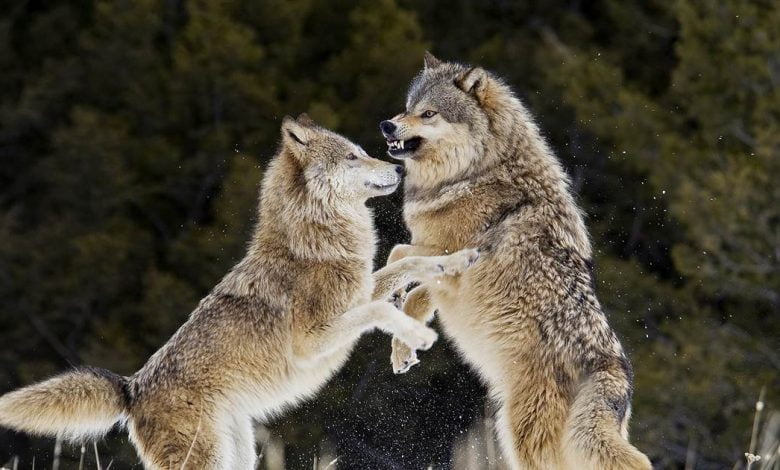African wild dog Dogs

Taxonomy
Canine phylogeny with ages of divergence
Gray wolf Dogs, jackals, wolves, and foxes (Plate I).png
Coyote Dogs, jackals, wolves, and foxes (Plate IX).png
1.10 mya
African golden wolf Dogs, jackals, wolves, and foxes (Plate XI).jpg
1.32 mya
Ethiopian wolf Dogs, jackals, wolves, and foxes (Plate VI).png
1.62 mya
Golden jackal Dogs, jackals, wolves, and foxes (Plate X).png
1.92 mya
Dhole Dogs, jackals, wolves, and foxes (Plate XLI).png
2.74 mya
African wild dog Dogs, jackals, wolves, and foxes (Plate XLIV).png
3.06 mya
Side-striped jackal Dogs, jackals, wolves, and foxes (Plate XIII).png
Black-backed jackal Dogs, jackals, wolves, and foxes (Plate XII).png
2.62 mya
3.50 mya
Cladogram and divergence of the gray wolf (including the domestic dog) among its closest extant relatives[8]
In 1758, the Swedish botanist and zoologist Carl Linnaeus published in his Systema Naturae the binomial nomenclature.[3] Canis is the Latin word meaning “dog”,[9] and under this genus he listed the doglike carnivores including domestic dogs, wolves, and jackals. He classified the domestic dog as Canis familiaris, and the wolf as Canis lupus.[3] Linnaeus considered the dog to be a separate species from the wolf because of its cauda recurvata—its upturning tail—which is not found in any other canid.[10]
